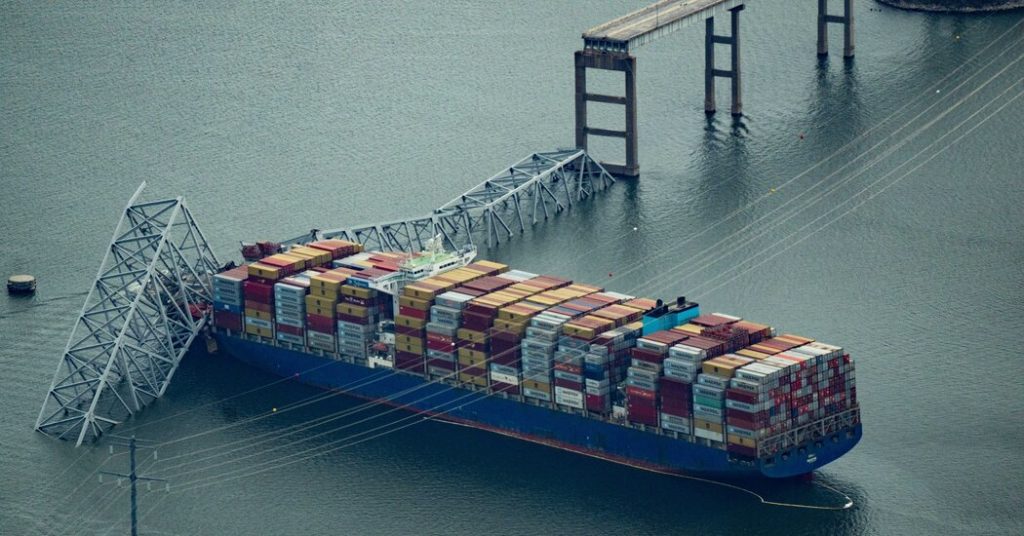President Biden has promised that the federal government will cover the “entire cost” of rebuilding the Francis Scott Key Bridge in Baltimore after it collapsed, potentially costing over $1 billion. However, determining who is ultimately liable for the disaster is expected to be a messy and expensive process. The shipowner and ship manager filed a petition to limit their liability, citing an 1851 law that allows for financial damages to be capped mostly to the value of the ship. Multiple parties are involved in this complex situation, including shipowners, insurers, and companies globally that move goods through Baltimore, making the resolution of liability a lengthy process. The six deaths caused by the collapse further complicate matters.
Investigations are ongoing to determine the cause of the catastrophic failure on the cargo ship the Dali, and whether negligence was involved. Industry experts estimate that the insurers and reinsurers could face up to $4 billion in claims due to the disaster, hitting maritime insurers with record losses. The loss of the Port of Baltimore, a major destination for car shipments, is adding to the accumulating losses. The owner of the Grace Ocean company, Yoshihashi Abe, who is reportedly very wealthy, controls a fleet of over 50 vessels worth an estimated $2.9 billion and owns two Chinese shipyards that can repair over 200 vessels a year. It is unusual for foreign companies to own Chinese shipyards, as state-owned companies typically dominate the industry.
If the ship owner is found liable, the insurer, Britannia P&I Club, will cover the first $10 million of claims. Claims beyond that amount will be shared among the 12 clubs of the International Group of P&I Clubs, with reassurance covering costs up to roughly $3 billion. While the damage is significant, it is not expected to have a long-term impact on insurers and reassurers, given the overall capital available in the reinsurance industry. Businesses affected by the closure of the bridge and port may be able to make claims on other insurance policies to cover their losses, potentially adding to the insured losses from the incident.
Efforts are underway to reopen the Port of Baltimore, with officials expecting full reopening by late May. The International Longshoremen’s Association Local 333, representing dockworkers, is seeking assistance from the federal and state governments due to the closure of the port affecting nearly 2,000 workers. While government funds may be used to aid companies affected by the disaster, taxpayers have typically been able to recoup these costs in previous emergency aid scenarios. However, the international nature of the claims in the Baltimore bridge collapse could complicate this process. Representative Dan Meuser has raised concerns about using federal funds without exploring other potential funding sources, such as from the owners and insurers of the Dali.
President Biden has expressed the need to hold the responsible party or parties accountable for the disaster, while also emphasizing the importance of not delaying the infrastructure project. The legal disputes around liability, insurers, and reinsurers, as well as the intricate web of international parties involved, are expected to make this one of the messiest and most costly disputes of its kind. The resolution of liability, compensation for the damage, and reopening of the bridge and port are all set to be prolonged processes as multiple parties navigate the legal and financial complexities of the situation.


